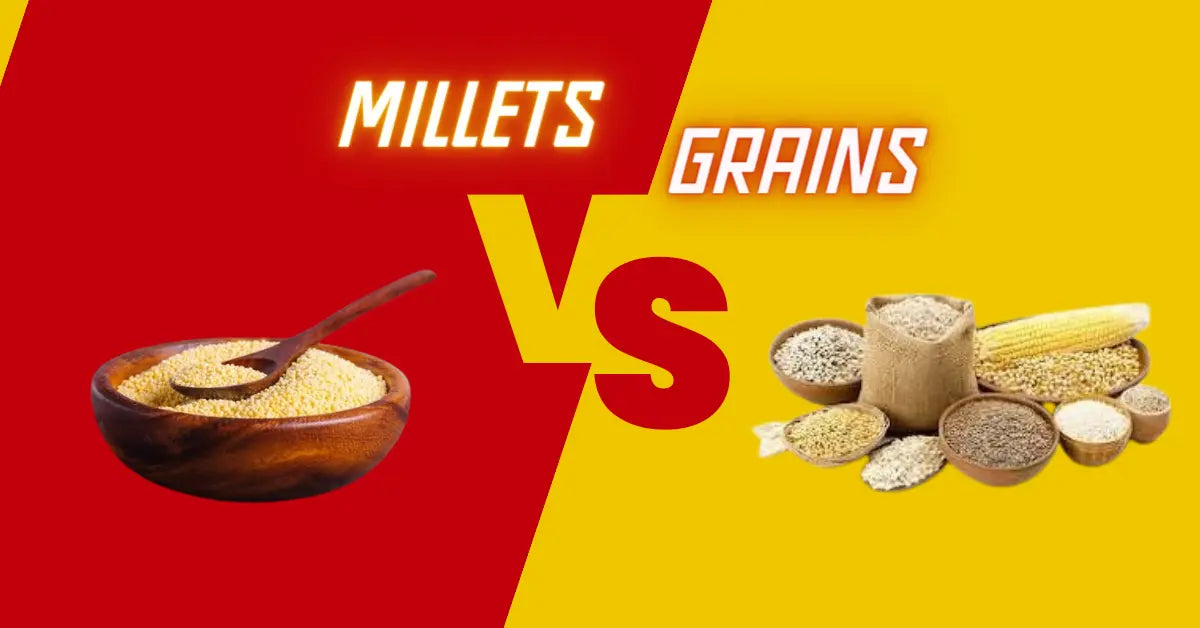

Millets vs Grains: A Comprehensive Comparison for a Healthier Diet
In an era of ever-evolving dietary trends, the comparison between millets and grains has become a topic of interest for health enthusiasts worldwide. This comprehensive guide aims to delve deep into the unique characteristics, nutritional profiles, and culinary uses of these two types of cereal crops.
Introduction
The world of cereals is vast, with an array of options from the ubiquitous wheat, rice, and corn to the lesser-known millets. Both millets and grains are types of cereal crops, but their differences lie in their botanical classification, nutritional content, and culinary uses.
Understanding Millets
Often considered as the 'ancient grains' of the East, millets are a group of small-seeded grasses cultivated as cereal crops in semi-arid and arid regions. They are known for their high nutritional value and resilience to harsh growing conditions.
Varieties of Millets
Millets can be classified into various types such as pearl millet, foxtail millet, finger millet, or sorghum. Each type brings with it a unique nutrient profile, taste, and texture.
Understanding Grains
Grains, also known as cereals, refer to the seeds of grass-like plants like wheat, rice, corn, and barley. They are a primary food source for many parts of the world and are known for their versatility in culinary applications.
Varieties of Grains
Grains come in a wide array of types including rice, wheat, maize (corn), oats, and barley. Each type of grain offers a unique nutrient profile and culinary characteristics.
Millets vs Grains: The Botanical Classification
While both millets and grains belong to the Poaceae family, they differ in their botanical classification. Grains, such as wheat and rice, are larger-seeded members of the Poaceae family. In contrast, millets are small-seeded grasses belonging to the same family but classified under a different subfamily, the Panicoideae.
Nutritional Comparison: Millets vs Grains
The nutritional profiles of millets and grains vary significantly. Millets are rich in fiber, protein, and essential minerals such as iron and magnesium. They are often considered more nutritious than traditional grains due to their high protein and fiber content and array of micronutrients.
On the other hand, while grains also offer dietary fiber and protein, they tend to be richer in carbohydrates and lower in minerals compared to millets. However, certain types of grains, like quinoa and whole wheat, are praised for their protein content, while others, like rice, are renowned for their carbohydrate content.
Culinary Uses: Millets and Grains
When it comes to culinary applications, millets and grains show considerable diversity. Millets, with their slightly nutty flavor, are often used in porridges, bread, flatbreads, and as bases for various dishes.
On the contrary, grains, with their versatility, find their way into a wide range of dishes. For instance, rice is a staple in many Asian cuisines, wheat is used to make bread and pasta, and oats are often consumed as oatmeal or added to baked goods.
Growing Conditions: A Comparison
In terms of adaptability, millets are more tolerant of poor soil and harsh weather conditions, making them popular crops in areas where other crops may struggle. On the other hand, grains like rice require abundant water, while others like wheat and barley can endure cooler climates.
Environmental Impact
When considering environmental impact, millets outshine most grains. Their ability to grow in less fertile soil with minimal water makes them a sustainable choice. In contrast, crops like rice, wheat, and corn often require more water and fertile soil, leading to greater environmental impact.
Millets, Quinoa, and Health
Quinoa, a pseudo-cereal, is often compared with millets due to its similar nutritional profile and gluten-free nature. Like millets, quinoa is rich in fiber, protein, vitamins, and minerals. However, quinoa stands out for its high protein content, boasting all nine essential amino acids, making it a complete protein source.
The Go-to Choice: Millets or Grains
Whether you should opt for millets or grains largely depends on your dietary needs and preferences. If you're looking for a gluten-free, nutrient-dense option, millets could be your best bet. However, if you're after a versatile ingredient that's rich in carbohydrates, grains like rice or wheat might be the right choice.
The bottom line is, both millets and grains are nutritious and versatile ingredients that can be used in a variety of ways. Incorporating a mix of these foods into your diet can contribute to a well-rounded and nutritious eating pattern.
Conclusion
Whether it's millets vs grains or grains vs millets, the key takeaway is that both bring unique benefits to the table. While millets boast higher nutrient density and resilience to harsh growing conditions, grains offer versatility in culinary uses and a wide range of growing conditions. Therefore, the choice between the two should align with your personal health goals, dietary restrictions, and taste preferences. Utilizing a mix of both can ensure a diverse and well-rounded diet.
In the end, the surge in popularity of ancient grains like millets reflects a growing awareness of their nutritional and environmental advantages. As consumers strive for healthier and more sustainable food choices, the 'millets or grains' debate is likely to persist. But remember, the key to a balanced diet lies not in choosing one over the other, but in embracing a variety of nutrient-rich foods.
